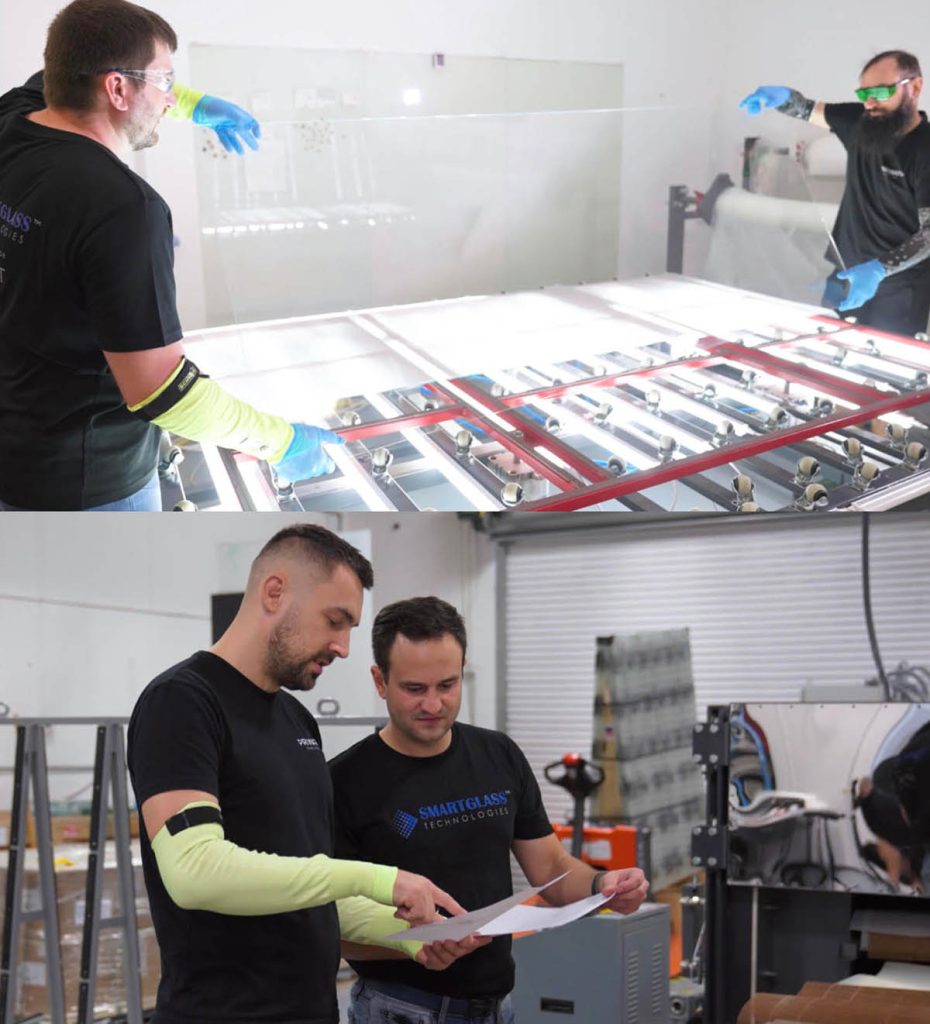

Smart Glass Technology is revolutionizing the way we design and interact with buildings. Imagine windows that automatically adjust their tint to maximize natural light and reduce energy consumption, or glass that transforms from transparent to opaque at the touch of a button. This isn’t science fiction; it’s the reality of smart glass, a rapidly evolving technology with the potential to reshape our urban landscapes and improve our quality of life. Many people are unaware of the numerous benefits smart glass offers, from reducing energy bills to enhancing privacy and security. This article delves into the exciting advancements in smart glass technology, exploring varied types, applications, and the future of this innovative material. We will examine various types of smart glass, their mechanisms, and discuss the potential for future innovation. Let’s dive in!
Exploring the World of Smart Glass: Types and Mechanisms
Electrochromic Smart Glass
Electrochromic glass, often referred to as EC glass, is one of the most prevalent types of smart glass. Its ability to switch between transparent and opaque states is achieved through an electrochemical process. Applying a voltage changes the oxidation state of the electrochromic material, thereby altering its light transmission properties. This technology is relatively mature and widely used in applications ranging from automotive sunroofs to architectural facades. Companies like SageGlass offer a scope of electrochromic glass solutions for various needs. One key benefit is its energy efficiency capabilities, reducing reliance on air conditioning systems.
Thermochromic Smart Glass
Thermochromic smart glass functions based on temperature changes. These windows automatically tint darker as the temperature rises, reducing heat transfer and lowering cooling costs. The technology relies on materials that alter their optical properties in response to temperature variations. Unlike electrochromic glass, thermochromic glass doesn’t require an external power source, making it energy efficient in itself. However, its functionality is limited to responding to ambient temperature only and offers less control compared to electrochromic options.
Suspended Particle Device (SPD) Smart Glass
Suspended Particle Device (SPD) smart glass uses millions of microscopic particles suspended in a liquid crystal layer. Applying voltage to this layer controls the alignment of these particles, influencing light transmission. In the opaque state, these particles scatter light, while in the transparent state, they align to allow light to pass through. SPD smart glass offers excellent light control and privacy options. This offers architects and designers considerable flexibility. The responsiveness of this type of glass also makes it suitable for use in various settings like offices, homes, and automobiles.
Applications of Smart Glass Technology Across Industries
Architectural and Construction
Smart glass has significantly impacted the architectural and construction industries. Its ability to regulate solar heat gain and glare makes it an ideal solution for energy-efficient buildings. By reducing the need for artificial lighting and air conditioning, smart glass contributes to sustainability and lower operational costs. Many modern buildings incorporate smart glass into their designs, showcasing its aesthetic appeal and environmental benefits. The use of smart glass is particularly beneficial in climates with extreme temperature fluctuations. Studies have shown that smart glass can significantly reduce energy consumption in buildings, leading to substantial cost savings over time.
Automotive Industry
The automotive industry has embraced smart glass for its potential to enhance driver comfort and safety. Smart glass sunroofs and windows offer adjustable tinting, shielding occupants from harsh sunlight and glare. The integration of smart glass into car windshields enables the creation of heads-up displays, providing crucial driving information directly within the driver’s line of sight. This enhanced visibility contributes to driver safety and reduces distraction. Several high-end vehicle models already attribute this technology, highlighting its growing popularity.
Healthcare Sector
In the healthcare sector, smart glass finds applications in privacy control within hospital rooms and operating theaters, optimizing patient comfort and privacy. Adjustable light transmission can be used to create an optimal environment for patient recovery. Furthermore, it can help prevent the spread of germs and infections through easy-to-clean surfaces. study and ongoing developments continue to explore its potential in patient monitoring and creating more therapeutic environments.
Future Trends and Innovations in Smart Glass Technology
Integration with Smart Home Systems
The future of smart glass lies in its seamless integration with smart home ecosystems. Imagine controlling the transparency of your windows through your smartphone or voice assistant. This level of automation offers unparalleled convenience and enhances the user experience. As smart home technology advances, we can expect even more sophisticated control options and integration capabilities. This will lead to more comfortable and energy-efficient homes and offices.
Advanced Materials and Manufacturing
study is actively exploring new materials and manufacturing processes to enhance smart glass performance and reduce production costs. Scientists and engineers are investigating novel electrochromic materials and improved manufacturing techniques to boost the efficiency and durability of smart glass. This ongoing innovation is vital for the widespread adoption of the technology and making smart glass available to a broader industry. By focusing on efficient production methods, we can also make it more sustainable and environmentally friendly.
Hybrid Smart Glass Solutions
Combining varied smart glass technologies can create hybrid solutions with enhanced functionality and adaptability. For instance, integrating electrochromic and thermochromic properties within a single pane of glass could offer superior light and heat control. This creates a window that dynamically adjusts to changing external conditions. Exploring such hybrid approaches promises to create a product capable of addressing a wider scope of needs. The development and innovation of new materials will enhance smart glass functionality and cost-efficacy.
Smart Glass Technology: Addressing Challenges and Opportunities
Cost Considerations
While the benefits of smart glass are undeniable, the cost remains a significant factor limiting widespread adoption. Currently, smart glass is generally more expensive than traditional glass. However, ongoing innovation in manufacturing techniques and economies of scale are expected to gradually reduce production costs. This will make smart glass more accessible to the broader industry. This cost-efficacy will drive its implementation in various residential and commercial buildings.
Durability and Maintenance
Ensuring the long-term durability and ease of maintenance of smart glass is crucial. Extensive study and testing are carried out to improve the material’s robustness and resistance to damage. Reliable and low-maintenance options are vital for widespread consumer and commercial acceptance. Addressing durability concerns will boost the longevity and appeal of this innovative product.
Energy Consumption of Smart Glass Systems
While smart glass aims to improve energy efficiency, the technology itself consumes some energy, particularly in electrochromic systems. Optimizing the energy efficiency of the control systems and smart glass components is essential for realizing the technology’s full potential. Minimizing energy consumption associated with smart glass is crucial for environmental sustainability and to ensure the overall energy benefits are maximized.
Smart Glass: The Future is Bright
The future of smart glass looks incredibly promising. Advancements in materials science, manufacturing techniques, and integration with other smart technologies will continue to drive innovation. We can anticipate even more sophisticated and versatile smart glass solutions in the near future. From self-cleaning windows to those that generate electricity, the possibilities seem endless. As smart glass becomes more affordable and accessible, it’s poised to fundamentally transform how we design, build, and interact with our environments. The ongoing evolution and innovation of smart glass technology is shaping a future that is more energy-efficient, technologically advanced, and aesthetically pleasing.
In conclusion, exploring the innovations in smart glass technology reveals a dynamic field poised for significant growth. From energy efficiency improvements to enhanced architectural aesthetics, smart glass offers compelling solutions for various sectors. The advancements in electrochromic, thermochromic, and suspended particle devices promise to transform the way we interact with our built environment. As study continues and costs decrease, smart glass is set to become an increasingly integral part of our future. Consider exploring the available options and integrating this innovative technology into your next project to experience the transformative potential of smart glass firsthand.